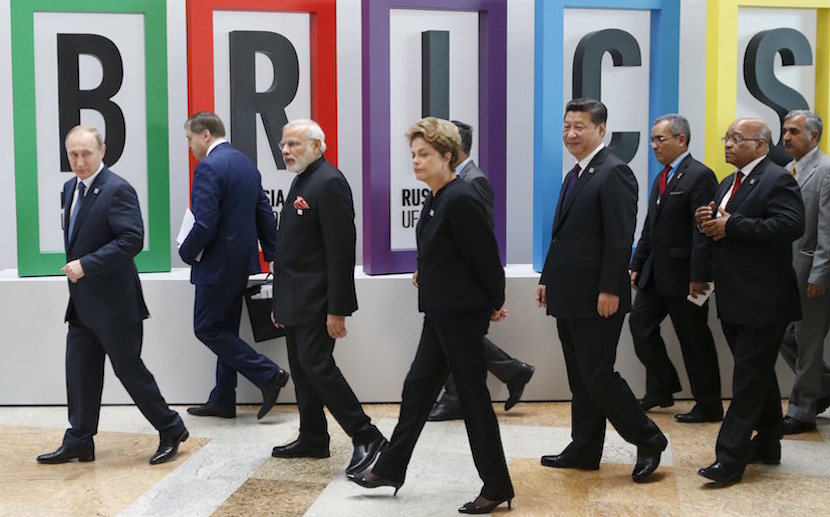South Africa has always been the little brother amongst the BRICS. And while Brazil’s growth may not be leading the light, one must argue the suspension of President Dilma Rousseff has shone a light on accountability and consequence. But when assessing the economic performance of the countries, South Africa has been a laggard with a distinct correlation with the performance of commodities. Statistical economist John Maynard takes a deeper look. – Stuart Lowman
By John Maynard*
What’s concerning when one looks at the BRICS countries is all but one showed improved growth from 2011 to 2014. And only one of the BRICS’s countries, India, showed better economic growth in 2014 than 2011. All the other BRICS countries were lower. Hardly encouraging numbers for South Africa, especially considering the fact that the South Africa government seems more inclined to do business with these countries than the USA and UK.
The graphic below shows the annual economic growth rates of the BRICS countries.
- Light blue (2011)
- Yellow (2012)
- Green (2013)
- Red (2014)
While the BRICS countries’ economic growth rates are slowing, the developed economies such as UK and USA have seen strong improvements in their growth rates when comparing 2014 growth to 2011.
So the question is why? Do they have better economic policies? Are their economies less dependent on one specific economic sector?
If one looks at China. The economy is largely based on manufacturing and it’s currently shifting it to be a more retail and services orientated one.
Then one analyses South Africa, who’s economic performance seems closely tied to the fortunes of commodities. As the manufacturing sector has showed a substantial decline since 1994. As the country imports more instead of manufacturing locally.See our Economic History and South Africa’s animated GDP pie chart. Another contributor to this is the lack of reliable power in South Africa.
 Russia and Brazil’s economies are largely also based on commodities. Russia with crude oil and gas and Brazil with sugar cane for use in ethanol.
Russia and Brazil’s economies are largely also based on commodities. Russia with crude oil and gas and Brazil with sugar cane for use in ethanol.
Significant declines in gas and crude prices have severely hampered the state coffers of these countries and has lead to serious economic contractions over the last couple of years.
India, being the only BRICS country to buck the trend, is slowly rising to become an economic super power. They have large scale urbanisation taking place (similar to what China experienced years ago, and to some extent is still experiencing). Demand for all goods and services are on the rise and there seems to be little stopping India’s growth for the medium term.
The USA and UK’s economies are less dependent on resources as they have a more diversified economy with strong manufacturing, retail and services sectors, which shields them a little more against volatile commodity movements. While their economic growth rates are lower during times of high commodity prices, compared to the more commodity based economies, their growth rates are higher during times of struggling commodity prices.
So perhaps South Africa, like China, should implement significant policy changes in order to change the level of dependence of the economy (and exchange rate) on commodity prices. As this will provide a more stable platform to build an economy on, and it will be easier for government to predict tax revenues.
- John Maynard is the nom de plume of an independent economist who is obsessed with official statistics – and uses these facts to blast through misleading narrative and propaganda. For more of his unique insights click here.


